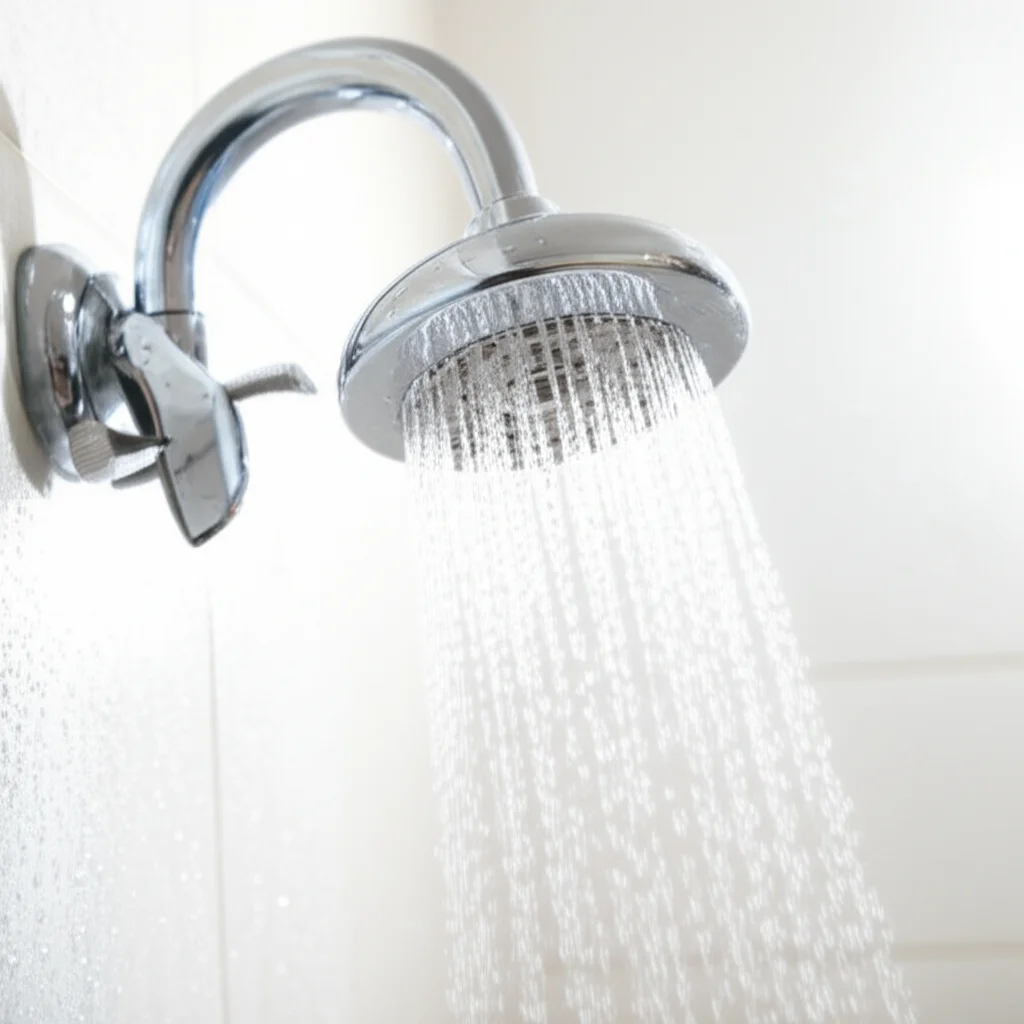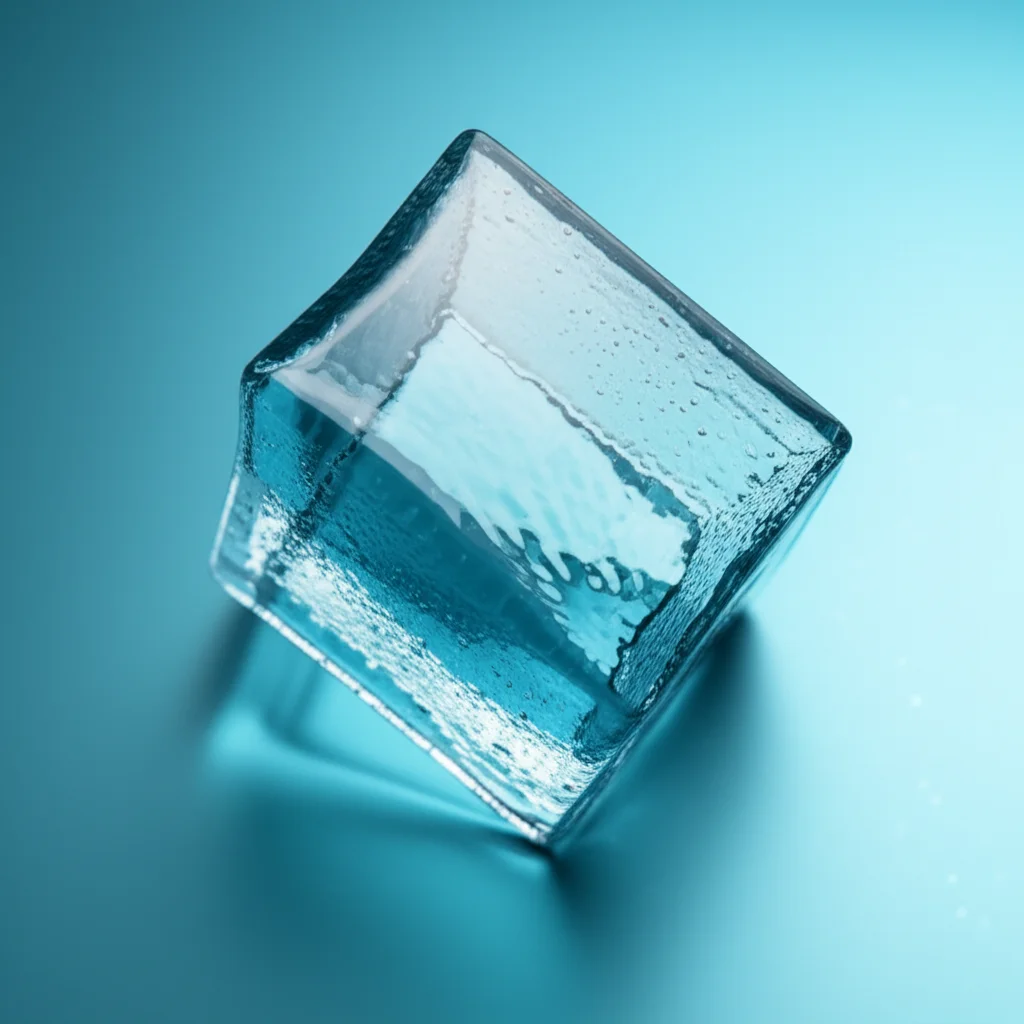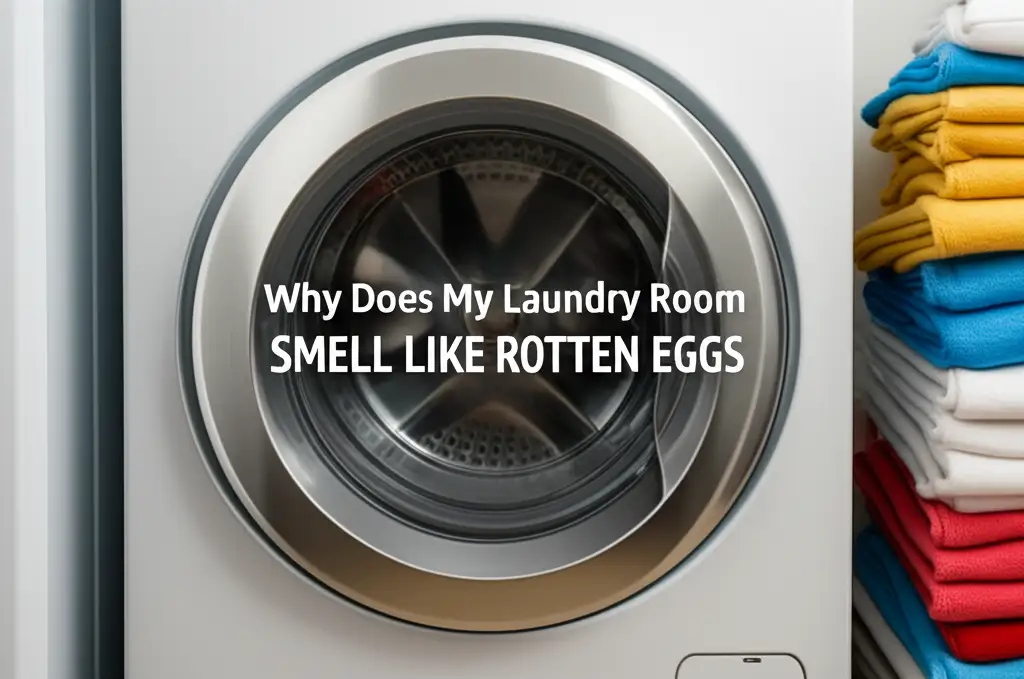· Todd Martin · Home Maintenance · 18 min read
How To Clean Shower Drain Smell

How To Clean Shower Drain Smell: Simple Steps
Have you ever stepped into your bathroom only to be met by an unpleasant odor coming from the shower drain? I know that feeling. A smelly shower drain can quickly turn a relaxing space into an irritating one. These odors often signal a build-up of grime, hair, soap scum, or even deeper plumbing issues.
Do not worry. You can tackle this common household problem effectively. We will explore simple, actionable steps to get rid of that foul smell. This guide covers everything from natural remedies to mechanical solutions. You will learn how to clean shower drain smell properly. We will also discuss how to keep it fresh in the long run.
Takeaway
- Identify the Cause: Pinpoint if the smell is from hair, soap scum, mold, or a dry P-trap.
- Use Natural Cleaners: Baking soda, vinegar, and boiling water are effective for many odors.
- Remove Physical Obstructions: Hair and gunk often need manual removal with a hook or snake.
- Address the P-Trap: Ensure your P-trap has water, or clean it if it is clogged.
- Regular Maintenance: Implement routine cleaning to prevent future odors from returning.
To clean a shower drain smell, first identify the odor source, typically hair, soap scum, or mold. Use boiling water, then a baking soda and vinegar solution to break down organic matter. For stubborn clogs, manually remove debris with a drain snake or hook. Ensure your P-trap contains water to block sewer gases.
Understanding the Causes of Shower Drain Smell
A smelly shower drain is more than just annoying. It often points to specific issues within your plumbing. Identifying the cause helps you choose the right cleaning method. Let us look at the most common reasons your shower drain might smell.
Hair and Soap Scum Buildup
This is the most common culprit. Every time you shower, hair washes down the drain. Soap, shampoo, and conditioner residues also go with it. Over time, these materials combine. They create a slimy, foul-smelling gunk. This build-up traps water and creates a breeding ground for bacteria. The bacteria feeding on this organic matter produce gases. These gases cause the unpleasant odor you smell.
Mold and Mildew Growth
Showers are damp and warm environments. These conditions are perfect for mold and mildew. These fungi can grow inside your drain pipes. They can also grow on the drain cover itself. Mold and mildew have a distinct musty or earthy smell. This smell can easily waft up from your drain. Regular cleaning is essential to keep these growths in check. You might also notice mold in other parts of your shower, which contributes to the overall smell. For tips on cleaning mold, you can learn how to clean mold in shower.
Dry P-Trap Issues
Your shower drain system has a U-shaped pipe called a P-trap. This trap holds a small amount of water. This water acts as a barrier. It blocks sewer gases from entering your home. If your shower is not used often, this water can evaporate. A dry P-trap allows nasty sewer smells to come right up the drain. Sometimes, a P-trap can also get clogged, preventing fresh water from refilling it. Understanding how to clean a shower drain trap is crucial for addressing this issue.
Sewer Gas Leaks or Vent Pipe Problems
Less common, but more serious, are issues with your home’s main plumbing system. Sewer gas contains methane and hydrogen sulfide. It smells like rotten eggs. If you smell this, it could indicate a cracked pipe. It could also mean a blocked vent pipe. Vent pipes allow fresh air into the system. This helps waste drain efficiently. If blocked, gases can get trapped. They then push back up through your drains. This issue usually requires professional help.
Food Particles (Rare for Showers)
While less common in showers, sometimes small debris, including food particles if you wash things like pet bowls, can go down the drain. These organic materials rot and produce foul odors. This cause is more typical for kitchen sinks. However, it can still contribute to a smelly shower drain in unusual circumstances. Grease and other build-ups can also contribute to the issue. Knowing how to clean grease from drain pipes is a helpful related skill.
By pinpointing the likely cause, you can select the most effective cleaning strategy. Many times, a combination of methods works best to fully eliminate the odor. The goal is to remove the source of the smell, not just mask it.
Gathering Your Tools: What You Need
Before you start cleaning your shower drain, gather all necessary tools and materials. Having everything ready saves time. It also makes the cleaning process much smoother. You likely already own most of these items.
Essential Household Cleaning Supplies
You will need some basic cleaning agents. These items are safe and effective for many drain issues. They offer a great starting point for tackling odors.
- Boiling Water: This is your first line of defense. Hot water can loosen grease. It can also dislodge some smaller clogs. It helps wash away residue.
- Baking Soda: This common kitchen item is an excellent natural deodorizer. It absorbs odors. It also reacts with acids to create a fizzy cleaning action.
- White Vinegar: Vinegar is acidic. It reacts with baking soda to create a powerful cleaning foam. This foam helps break down grime and kill bacteria. For more ways to use vinegar in your bathroom, consider learning how to clean shower with vinegar.
- Dish Soap: A few drops of dish soap can help cut through grease and lubricate the drain. It helps other cleaning agents flow better.
Mechanical Cleaning Tools
Sometimes, natural solutions are not enough. Physical obstructions like hair clogs need mechanical removal. These tools help you reach into the drain.
- Drain Cover Removal Tool: You might need a screwdriver or pliers. These help remove the drain cover. Different drains have different covers. Some lift right out. Others are screwed down.
- Rubber Gloves: Protect your hands from grime and chemicals. This is especially important when dealing with drain contents.
- Paper Towels or Old Rags: Use these for wiping away removed gunk. They are disposable.
- Flashlight: A small flashlight can help you see inside the drain. This makes it easier to spot clogs or blockages.
- Drain Snake or Hair Removal Tool: These are flexible tools. They can reach deep into the drain. They snag and pull out hair and other debris. A simple plastic drain snake with barbed edges is often very effective. For more specific guidance, see how to clean hair from shower drain.
- Plunger: A standard cup plunger can create suction. This suction helps dislodge stubborn clogs. Use it carefully to avoid splashing.
Safety Gear
Always prioritize your safety. Chemical cleaners can be harsh. Even natural cleaners can cause irritation.
- Safety Goggles: Protect your eyes from splashes. This is especially important if using chemical drain cleaners.
- Ventilation: Ensure the bathroom is well-ventilated. Open windows or turn on the exhaust fan. This prevents fume buildup, especially with bleach or chemical products.
Having these items ready before you begin saves you trips to the store. It allows you to focus on the cleaning task at hand. You will be better prepared to tackle any type of smelly drain issue.
Natural Solutions: Cleaning with Household Items
Many shower drain odors can be resolved with common household products. These methods are eco-friendly and safe for your pipes. They are also effective at breaking down organic matter.
The Boiling Water Flush
Start with the simplest method. Boiling water can dissolve some fatty deposits and soap scum. It also helps dislodge smaller clogs. This is a good first step before trying anything else.
- Boil Water: Heat a large pot of water on the stove. Make sure it is at a rolling boil.
- Pour Slowly: Carefully pour the hot water directly down the drain. Pour it in stages. Let it sit for a few seconds between each pour. This allows the heat to work on the build-up.
- Repeat if Needed: If the smell persists, you can repeat this step a few times.
Be cautious when pouring hot water. Avoid splashes. This method is generally safe for most pipes. However, avoid boiling water for PVC pipes if the smell is from chemical residue, as it could damage them.
Baking Soda and Vinegar Power Duo
This classic combination creates a powerful chemical reaction. The fizzing action helps loosen debris. The ingredients are natural deodorizers and mild disinfectants. This method is effective for a general smelly drain or minor clogs. For more information on this method, you can also check how to clean shower with baking soda or how to clean sink drain with vinegar.
- Remove Drain Cover: Take off the drain cover. This allows direct access to the pipe.
- Pour Baking Soda: Pour one cup of baking soda directly down the drain. Try to get as much as possible into the pipe.
- Add Vinegar: Follow with one cup of white vinegar. You will see fizzing immediately. This is the chemical reaction at work.
- Wait: Let the mixture sit for at least 30 minutes. For tougher smells or clogs, leave it overnight. The longer it sits, the more time it has to break down the grime.
- Flush with Hot Water: After waiting, flush the drain with a kettle of hot water. This washes away the loosened debris.
You can also add a few drops of dish soap with the baking soda for added grease-cutting power. This combination works wonders on soap scum and hair residue. Repeat weekly as a preventative measure.
Lemon Juice and Borax
For a fresh scent and extra cleaning power, consider lemon juice and borax. Borax is a natural mineral. It is an excellent cleaner and deodorizer. Lemon juice adds a pleasant smell and acidic cleaning properties.
- Mix Solution: Combine 1/2 cup borax with 1/4 cup lemon juice. Mix them into a paste.
- Apply and Wait: Pour the paste down the drain. Let it sit for 1-2 hours.
- Flush: Flush with hot water.
This method is great for lingering musty smells. It leaves a fresh, clean scent behind. These natural methods are safe for your pipes. They are also gentle on the environment. They are a great first step in your fight against drain odors.
Mechanical Cleaning: Tackling Hair and Gunk
Sometimes, a smelly shower drain is caused by a physical blockage. Hair and soap scum combine to form stubborn clogs. Natural solutions may not fully dislodge them. In these cases, mechanical cleaning tools are necessary. This approach directly removes the source of the odor.
Removing the Drain Cover
Accessing the drain is the first step for any mechanical cleaning. Different drains have different covers.
- Identify Cover Type: Some drain covers just lift off. Others might be screwed down. You may need a screwdriver (Phillips or flathead). Some older drains might require pliers to twist off.
- Carefully Remove: Gently remove the cover. Place it aside where it will not get lost.
- Clean the Cover: While it is off, clean the underside of the drain cover. It often collects hair and grime. Use an old toothbrush and some all-purpose cleaner.
Manual Hair Removal with a Hook or Pliers
Once the cover is off, you might see hair and gunk near the surface. This is often the prime source of the smell.
- Put on Gloves: Always wear rubber gloves. This protects your hands from unsanitary drain contents.
- Visually Inspect: Use a flashlight to look down the drain. See how much gunk is visible.
- Use Pliers or Hook: If the gunk is within reach, use needle-nose pliers or a bent wire coat hanger. Gently pull out as much hair and soap scum as you can. It might be slimy and unpleasant. Place the removed gunk on paper towels for easy disposal.
This initial manual removal can often solve the problem. It eliminates a significant amount of odor-causing material.
Using a Plastic Drain Snake
For deeper clogs, a plastic drain snake (also called a zip-it tool) is very effective. These inexpensive tools have barbs that grab hair.
- Insert the Snake: Push the plastic drain snake slowly down the drain. You will feel resistance when it hits a clog.
- Twist and Pull: Once you hit the clog, twist the snake gently. Then pull it out slowly. It should bring up a significant amount of hair and gunk.
- Clean and Repeat: Wipe the gunk off the snake with paper towels. Dispose of the waste. Repeat the process several times. Continue until no more hair or debris comes out.
- Flush: After clearing the clog, flush the drain with hot water. This helps wash away any remaining small particles. For more detailed steps, refer to how to clean hair from shower drain.
Using a Plunger for Stubborn Clogs
If the clog is deep and resistant to the snake, a plunger can create suction. This suction might dislodge the blockage.
- Seal the Overflow: If your shower has an overflow drain, cover it with a wet cloth or tape. This ensures maximum suction.
- Create a Seal: Place the plunger cup directly over the drain opening. Ensure a tight seal around the edges.
- Plunge Vigorously: Plunge up and down rapidly for 15-20 seconds. Keep the seal tight.
- Check and Repeat: Remove the plunger. See if the water drains freely. If not, repeat the plunging process.
Mechanical cleaning is direct and often necessary for hair-related clogs. Combining these methods with natural solutions provides a comprehensive cleaning approach. For general information on cleaning a clogged drain, you can also consult how to clean clogged drain.
Deep Cleaning the P-Trap and Beyond
Sometimes, the source of your shower drain smell is not just a simple clog. The P-trap, the U-shaped pipe under your drain, can be a breeding ground for odors. Or, the issue might lie deeper in your plumbing system. Addressing these areas requires a bit more effort but can be key to eliminating persistent smells. For more specific information, learn about how to clean a shower drain trap.
Understanding the P-Trap’s Role
The P-trap is designed to hold a small amount of water. This water barrier prevents sewer gases from entering your home. If the water evaporates or if the trap itself becomes excessively fouled, smells can emerge.
- Dry P-Trap: If your shower is rarely used, the water in the P-trap can evaporate. This allows sewer gases to come up. The fix is simple: run water down the drain for a minute or two. This refills the trap.
- Fouled P-Trap: Over time, sludge, hair, and soap scum can accumulate inside the P-trap. Even if there is water, this organic matter decays. It produces foul smells. This often requires physical cleaning.
Cleaning a Removable P-Trap (If Accessible)
Some P-traps, especially under sinks, are designed to be easily disassembled. Shower drains often have less accessible P-traps. However, if yours is visible and has unions, you can clean it.
- Place a Bucket: Put a bucket directly under the P-trap. It will catch any water or debris that falls out.
- Loosen Nuts: Use a wrench or pliers to loosen the slip nuts on either side of the P-trap.
- Remove the Trap: Carefully detach the P-trap. Water will spill out.
- Clean Thoroughly: Remove all gunk, hair, and sludge from the trap. Use a bottle brush or an old toothbrush. Rinse it thoroughly with hot water.
- Reassemble: Reattach the P-trap, ensuring the nuts are tightened securely. Run water to check for leaks.
This method is for the adventurous DIYer. If you are unsure, consider other methods first.
Addressing Deeper Issues: Vent Pipes and Main Drains
If your drain smells like rotten eggs, or if multiple drains in your home smell, the issue might be a sewer gas leak or a blocked vent pipe. These are serious problems.
- Sewer Gas Leaks: These can be caused by cracks in drain pipes or loose pipe connections. The smell is distinctive and pervasive. You might notice it throughout your bathroom or even your house.
- Blocked Vent Pipes: Your home’s plumbing system has vent pipes. These pipes extend through your roof. They allow air into the drain system. This helps waste flow down smoothly. If a vent pipe gets blocked (by a bird’s nest, leaves, or debris), it can create a vacuum. This pulls water out of P-traps. It allows sewer gas to enter your home.
For these deeper issues, contacting a licensed plumber is usually the best course of action. They have specialized tools to diagnose and fix such problems. Attempting to fix a main sewer line or vent pipe without experience can cause more damage. For general drain issues, you can learn more about how to clean a smelly drain. Also, insights on how to clean your sink drain might be useful for related issues.
Chemical Cleaners: When and How to Use Them
Chemical drain cleaners can seem like a quick fix for a smelly shower drain. They contain harsh chemicals designed to dissolve organic matter. However, they come with risks. It is crucial to understand when and how to use them safely. I generally recommend trying natural and mechanical methods first.
Types of Chemical Drain Cleaners
Chemical drain cleaners come in different formulations. They work in different ways.
- Caustic Cleaners: These contain lye (sodium hydroxide) or potassium hydroxide. They create heat. This heat helps dissolve grease and hair. They are very corrosive.
- Oxidizing Cleaners: These use chemicals like bleach or peroxides. They cause organic matter to oxidize and break down. They can be very reactive.
- Acidic Cleaners: These are typically professional-grade products. They contain high concentrations of sulfuric acid or hydrochloric acid. They are extremely corrosive and should only be used by professionals.
Risks and Precautions
Using chemical drain cleaners incorrectly can cause serious problems. They can harm you, your plumbing, and the environment.
- Personal Safety: These chemicals can cause severe burns to skin and eyes. Inhaling fumes can damage your respiratory system. Always wear safety goggles and rubber gloves. Ensure good ventilation in the bathroom.
- Pipe Damage: Caustic cleaners generate heat. This heat can warp or melt PVC pipes. They can also damage older metal pipes. If a chemical cleaner does not work, it can sit in your pipes. This makes manual removal by a plumber more dangerous.
- Environmental Impact: These chemicals are harmful if they enter waterways. Dispose of them responsibly.
- Mixing Chemicals: Never mix different chemical drain cleaners. This can create dangerous chemical reactions. It can produce toxic gases or even explosions. Never mix them with natural cleaners like vinegar or bleach. For instance, mixing bleach with vinegar creates chlorine gas. Learn more about how to clean shower with bleach for safe usage.
When to Consider Using Them (With Extreme Caution)
I only recommend chemical cleaners as a last resort. This is after you have exhausted natural and mechanical methods.
- Minor, Persistent Clogs: For very minor, recurring clogs that natural methods cannot completely resolve.
- Specific Product Instructions: If you choose to use one, select a product specifically designed for shower drains. Always follow the manufacturer’s instructions to the letter. Never exceed the recommended amount or waiting time.
How to Use Chemical Drain Cleaner Safely
- Read Instructions: Read the entire product label carefully. Understand all warnings and directions.
- Safety Gear: Put on rubber gloves and safety goggles. Open windows or turn on the exhaust fan.
- Clear the Drain: Remove any standing water from the shower basin.
- Pour Slowly: Pour the recommended amount of cleaner directly into the drain.
- Wait: Allow the cleaner to sit for the time specified on the label. Do not leave it longer.
- Flush Thoroughly: Flush the drain with a large amount of cold water. This washes the cleaner away.
- Do Not Repeat Too Soon: If the clog persists, do not immediately add more cleaner. This can lead to chemical buildup and pipe damage. It is better to call a plumber at this point.
While chemical cleaners can be effective, their risks are significant. Prioritize natural solutions and mechanical methods first. They are safer for you, your pipes, and the environment.
Preventing Future Shower Drain Odors
Eliminating a shower drain smell is a great accomplishment. However, the best approach is prevention. Regular maintenance can keep your drain fresh and functional. These simple habits can save you time and hassle in the long run.
Use a Drain Cover or Hair Catcher
This is one of the easiest and most effective preventative measures. A good drain cover or hair catcher will prevent most hair and larger debris from going down the drain.
- Install a Mesh Screen: Place a fine mesh screen over your drain. It will catch hair and soap scum before they enter the pipe.
- Regularly Clean: Remove and clean the hair catcher after every shower or at least weekly. Dispose of the collected hair in the trash, not the toilet.
This simple step significantly reduces hair accumulation, a primary cause of drain odors and clogs. For more specific cleaning, consider tips from how to clean a shower drain.
Regular Flushing and Maintenance Flushes
Even with a hair catcher, some smaller particles will get through. Regular flushing helps prevent them from accumulating.
- Hot Water Flush: After every shower, let the hot water run for an extra minute. This helps wash down any lingering soap scum or small debris.
- Weekly Boiling Water Flush: Once a week, pour a kettle of boiling water down the drain. This helps dissolve any grease or soap residue that might be starting to build up.
- Baking Soda and Vinegar Flush (Monthly): Once a month, repeat the baking soda and vinegar treatment. Pour 1/2 cup baking soda down the drain, followed by 1/2 cup white vinegar. Let it sit for 30 minutes, then flush with hot water. This proactive cleaning helps prevent significant build-ups.
Avoid Pouring Grease Down the Drain
While not as common in shower drains as in kitchen sinks, grease can still contribute to clogs and smells. Avoid washing anything oily or greasy down your shower drain. This includes pet grooming products that might contain oils or residues. Grease solidifies in cold pipes. It traps hair and other debris. For related advice, see how to clean grease from drain pipes.





